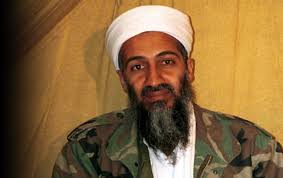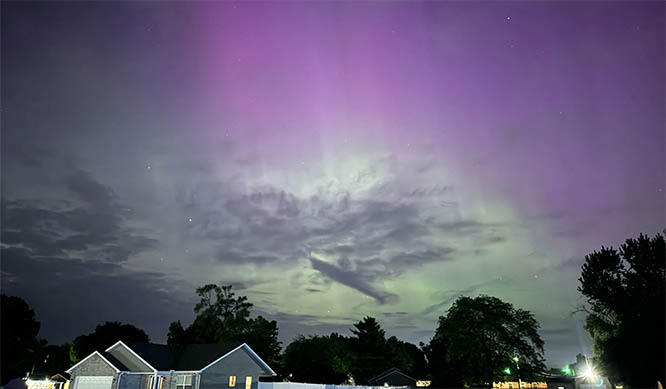
The Pakistani government, under President Pervez Musharraf and his intelligence chief, Lt Gen Ashfaq Parvez Kayani, was maintaining and protecting the Taliban, both to control the many groups of militants now lodged in the country and to use them as a proxy force to gain leverage over and eventually dominate Afghanistan.
The dynamic has played out in ways that can be hard to grasp from the outside, but the strategy that has evolved in Pakistan has been to make a show of cooperation with the American fight against terrorism while covertly abetting and even coordinating Taliban, Kashmiri and foreign Qaeda-linked militants.
The linchpin in this two-pronged and at times apparently oppositional strategy is the ISI. It's through that agency that Pakistan's true relationship to militant extremism can be discerned — a fact that the United States was slow to appreciate, and later refused to face directly, for fear of setting off a greater confrontation with a powerful Muslim nation.
It took more than three years before the depth of Pakistan's relationship with Al Qaeda was thrust into the open and the world learned where Bin Laden had been hiding, just a few hundred yards from Pakistan's top military academy. In May 2011, I drove with a Pakistani colleague down a road in Abbottabad until we were stopped by the Pakistani military.
We left our car and walked down a side street, past several walled houses and then along a dirt path until there it was: Osama bin Laden's house, a three-story concrete building, mostly concealed behind concrete walls as high as 18 feet, topped with rusting strands of barbed wire. This was where Bin Laden hid for nearly six years, and where, 30 hours earlier, Navy SEAL commandos shot him dead in a top-floor bedroom.
Soon after the Navy SEAL raid on Bin Laden's house, a Pakistani official told me that the United States had direct evidence that the ISI chief, Lt Gen Ahmed Shuja Pasha, knew of Bin Laden's presence in Abbottabad. The information came from a senior United States official, and I guessed that the
Americans had intercepted a phone call of Pasha's or one about him in the days after the raid. “He knew of Osama's whereabouts, yes,” the Pakistani official told me.
The official was surprised to learn this and said the Americans were even more so. Pasha had been an energetic opponent of the Taliban and an open and cooperative counterpart for the Americans at the ISI. “Pasha was always their blue-eyed boy,” the official said. But in the weeks and months after the raid, Pasha and the ISI press office strenuously denied that they had any knowledge of Bin Laden's presence in Abbottabad.
Colleagues at The Times began questioning officials in Washington about which high-ranking officials in Pakistan might also have been aware of Bin Laden's whereabouts, but everyone suddenly clammed up. It was as if a decision had been made to contain the damage to the relationship between the two governments. “There's no smoking gun,” officials in the Obama administration began to say.
Revelation of correspondenceThe haul of handwritten notes, letters, computer files and other information collected from Bin Laden's house during the raid suggested otherwise, however. It revealed regular correspondence between Bin Laden and a string of militant leaders who must have known he was living in Pakistan, including Hafiz Muhammad Saeed, the founder of Lashkar-e-Taiba, a pro-Kashmiri group that has also been active in Afghanistan, and Mullah Omar of the Taliban. Saeed and Omar are two of the ISI's most important and loyal militant leaders.
Both are protected by the agency. Both cooperate closely with it, restraining their followers from attacking the Pakistani state and coordinating with Pakistan's greater strategic plans. Any correspondence the two men had with Bin Laden would probably have been known to their ISI handlers.
Bin Laden did not rely only on correspondence. He occasionally travelled to meet aides and fellow militants, one Pakistani security official told me. “Osama was moving around,” he said, adding that he heard so from jihadi sources. “You cannot run a movement without contact with people.” Bin Laden travelled in plain sight, his convoys always knowingly waved through any security checkpoints.
In 2009, Bin Laden reportedly travelled to Pakistan's tribal areas to meet with the militant leader Qari Saifullah Akhtar. Informally referred to as the “father of jihad,” Akhtar is considered one of the ISI's most valuable assets. According to a Pakistani intelligence source, he was the commander accused of trying to kill Bhutto on her return in 2007, and he is credited with driving Mullah Omar out of Afghanistan on the
back of a motorbike in 2001 and moving Bin Laden out of harm's way just minutes before American missile strikes on his camp in 1998.
After the Sept 11 attacks, he was detained several times in Pakistan. Yet he was never prosecuted and was quietly released each time by the ISI.
In trying to prove that the ISI knew of Bin Laden's whereabouts and protected him, I struggled for more than two years to piece together something other than circumstantial evidence and suppositions from sources with no direct knowledge.
Only one man, a former ISI chief and retired general, Ziauddin Butt, told me that he thought Musharraf had arranged to hide Bin Laden in Abbottabad. But he had no proof and, under pressure, claimed in the Pakistani press that he'd been misunderstood. Finally, on a winter evening in 2012, I got the confirmation I was looking for.
According to one inside source, the ISI actually ran a special desk assigned to handle Bin Laden. It was operated independently, led by an officer who made his own decisions and did not report to a superior. He handled only one person: Bin Laden. I was sitting at an outdoor cafe when I learned this, and I remember gasping, though quietly so as not to draw attention.
America's failure to fully understand and actively confront Pakistan on its support and export of terrorism is one of the primary reasons President Karzai has become so disillusioned with the United States. As American and Nato troops prepare to withdraw from Afghanistan by the end of this year, the Pakistani military and its Taliban proxy forces lie in wait, as much a threat as any that existed in 2001.
Pakistani security officials, political analysts, journalists and legislators warned of the same thing. The Pakistani military was still set on dominating Afghanistan and was still determined to use the Taliban to exert influence now that the United States was pulling out.
The United States was neither speaking out against Pakistan nor changing its policy toward a government that was exporting terrorism, the legislator lamented. “How many people have to die before they get it? They are standing by a military that protects, aids and abets people who are going against the US and Western mission in Afghanistan, in Syria, everywhere.”








Comments
Add new comment